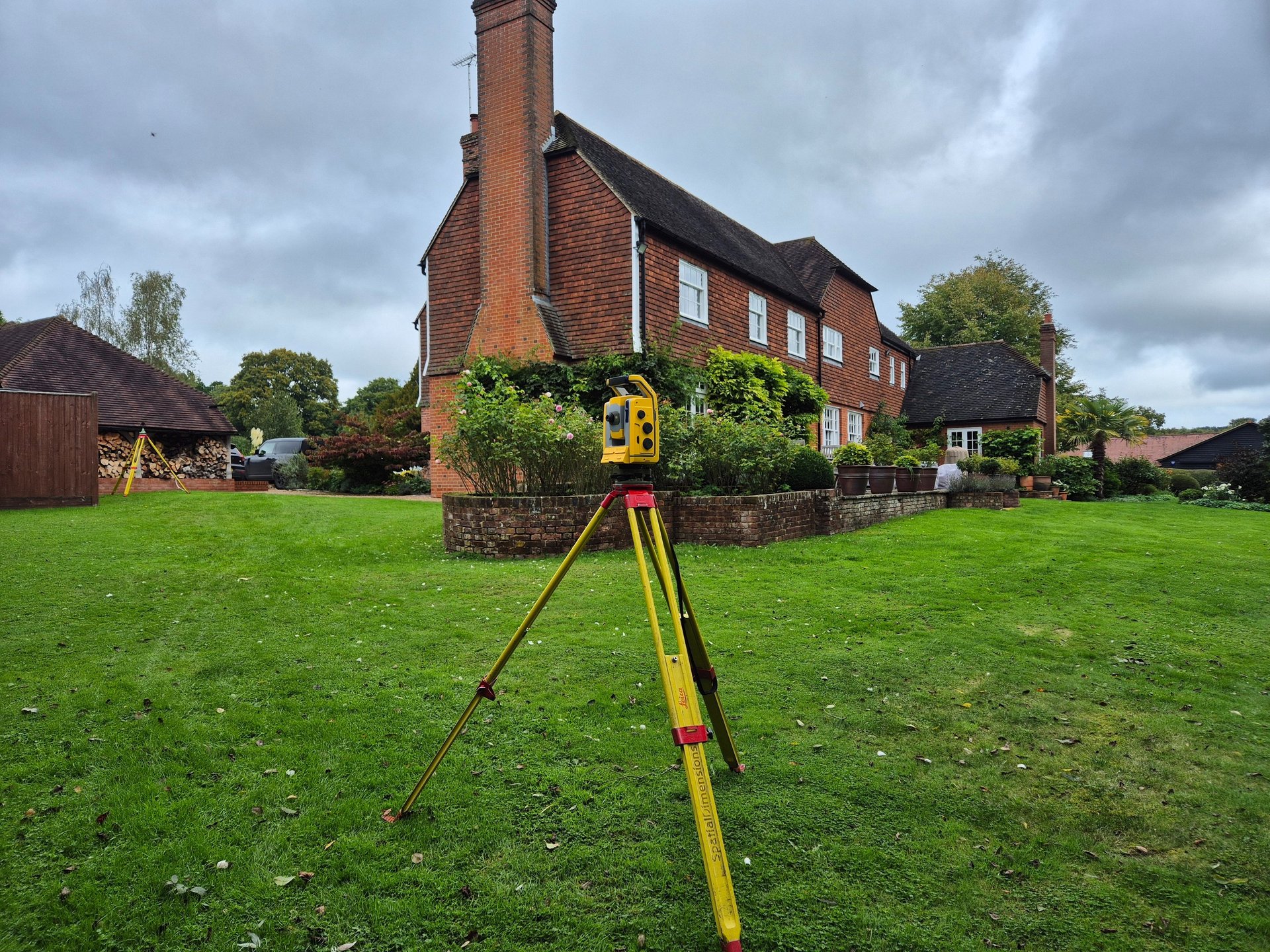Contact Us - T: 02080 580401 - E: admin@360measurements.co.uk

Topographical Surveys
Topographical Survey FAQ
What is a topographical survey?
A topographic survey (also known as a topographical land survey) provides highly accurate data about the natural and man-made features of a specific piece of land. This type of land survey records boundaries, ground levels, and physical features, delivering essential information for development, planning, and construction projects. Completing a topographic land survey is a vital first step in the site design process and should be carried out before any detailed architectural or engineering work begins.
Key permanent features such as buildings, fences, trees, watercourses, and ground levels are carefully measured and mapped to define the site and its boundaries. Using advanced surveying instruments and modern technology, our team captures precise digital data that reflects the site’s topography, assets, and existing layout.
This reliable survey data forms the foundation for architects, engineers, and planners, supporting the design and delivery of projects ranging from small residential developments to large-scale commercial sites and major transport infrastructure.
Why are topographical surveys important?
A topographical survey is a vital step in the planning and design process of any construction or development project. These surveys provide accurate, detailed measurements of a site’s natural and man-made features, including boundaries, ground levels, trees, watercourses, and existing structures. By delivering a clear picture of the land’s layout, a topographical survey helps architects, engineers, and planners make informed decisions before design and construction begin.
The importance of topographic surveys lies in their ability to:
Identify site constraints such as slopes, drainage patterns, and obstacles that may affect development.
Reduce costly errors by providing precise, reliable data for design and construction.
Assist planning applications by supplying essential information required by local authorities.
Support accurate design for residential, commercial, and infrastructure projects.
In short, conducting a topographical land survey ensures projects are designed with confidence, saving both time and money while reducing risks during development.
How long does it take?
The time required to complete a topographic survey (or topographical land survey) depends on several factors, including the size of the site, the complexity of the terrain, the presence of natural and man-made features, and the survey methods used. The required level of detail also plays a key role in determining survey duration.
For a small, relatively flat area, a simple land survey carried out with modern equipment such as GPS technology or drone surveying may take just a few hours to one day. In contrast, topographical surveys of larger or more complex sites—such as those with steep gradients, dense vegetation, or numerous structures—can require several days or even weeks to complete.
As a guideline, a typical topographic survey for a residential plot under one acre can usually be finished within 1–2 days. Larger, more detailed projects, however, may extend to 5–10 days or longer, depending on site conditions and project requirements.
What equipment do you use?
Modern construction projects rely on advanced instruments to capture accurate site data. One of the most common tools is the robotic total station, which allows surveyors to measure a wide range of features with precision. These instruments include a built-in feature code list, enabling surveyors to record survey points efficiently. For example, when outlining a building footprint, the surveyor can apply a specific code that automatically connects the survey points into a defined structure.
In addition to robotic total station surveys, other technologies are often used depending on site access, project specifications, and terrain conditions. These include:
GPS GNSS RTK Rovers – for fast, accurate positioning across open sites.
UAV (drone) surveys – for aerial mapping and large-area data capture.
Laser scanning equipment – for highly detailed 3D models of existing structures and surfaces.
By combining these advanced surveying methods, construction professionals can ensure reliable, high-quality data that supports effective planning, design, and execution.
How accurate are your surveys?
Our topographic and land surveys are carried out with the highest level of precision, following the strict guidelines set by the Royal Institution of Chartered Surveyors (RICS). Accuracy is critical in surveying, as even small errors can lead to costly design changes or delays in construction.
By using advanced equipment such as robotic total stations, GNSS RTK rovers, UAV drones, and 3D laser scanning technology, we consistently achieve survey data with accuracy levels that meet or exceed RICS-recommended tolerances.
Key points about our survey accuracy:
RICS-compliant survey methods and reporting standards.
High-resolution digital data ensuring reliable measurements.
Accuracy tailored to project requirements, from residential plots to large-scale infrastructure.
Rigorous quality control checks to verify all measurements before delivery.
In short, our surveys provide precise, dependable data you can trust—whether for planning applications, engineering design, or construction.
Who uses topographic survey data and why is it important?
Topographic survey data is an essential resource for a wide range of professionals involved in land development, planning, and construction. By providing precise measurements of a site’s natural and man-made features, topographical surveys enable informed decision-making and reduce risks during the design and construction process.
Key users of topographic survey data include:
Architects – to plan layouts and design buildings based on accurate site topography.
Civil and structural engineers – for designing foundations, drainage, and infrastructure.
Urban planners and developers – to assess land suitability and plan new residential, commercial, or industrial projects.
Construction contractors – to ensure accurate site preparation and avoid costly errors.
Surveyors and GIS professionals – for integrating survey data into mapping and geographic information systems.
By providing reliable land survey data, topographic surveys support projects ranging from small-scale residential developments to large-scale commercial and transport infrastructure.
360 Measurements
Phone number: 02080580401
© 2025. All rights reserved.
